AFB International’s strategic initiative to improve the palatability performance of wet cat food. Premiumisation of wet cat food The humanisation trend in pet food presents opportunities and challenges for cat food manufacturers. Cat owners are increasingly willing to spend more on their cats, as they are viewed as family members....

Optimizing Palatability Across Life Stages: Link between First Choice and Intake Ratio in Dogs and Cats
As pet owners increasingly seek tailored nutrition for their animals, understanding how life stages influence eating behavior becomes crucial. This work explores the link between two key palatability metrics, first choice and intake ratio, where in AFB palatability results it becomes clear that flavor preferences in pets evolve throughout their life stages.
This study emphasizes the importance of developing palatants formulations that cater to pets’ distinct taste sensitivities, nutritional requirements and enjoyment across life stages, ultimately supporting the health and well-being of both cats and dogs.
Based on over 1,500 two-bowl palatability assessments trials conducted for both species, cats and dogs, this research provided a robust pool of data, based on real-world data across a broad population of cats and dogs in different life stages.
KEY FINDINGS
Our research highlighted key palatability factors influencing preference, through controlled feeding trials and preference assessments. We evaluated the effectiveness of various palatability parameters across each life stage and species, taking a number of flavor enhancement strategies addressing palatability improvement.
Palatability is known to drive acceptability and consumption of pet food. Two critical indicators identified aligned with pets’ life stage were:
Intake Ratio: The proportion of the offered food that is actually consumed.
First Choice: Which product a pet choose first when given multiple options, driven primarily by aroma.
In the present study, it was observed that both metrics are influenced by a pet’s sensory perception, which is believed to change with age.
One of the key findings is that first choice, related to aroma perception, is not only positively correlated with intake ratio, but also, in particular for cats from young age through adulthood and into senior years, the observed correlation is considerably high (>0.87) across all life stages (Figure 1).
RESULTS: CORRELATION INSIGHTS ACROSS LIFE STAGES
The relationship between first choice and intake ratio is based on data from over 1,500 two-bowl assessments for both dogs and cats. The results demonstrated clear patterns of correlation strength varying by life stage for both studied animal species.
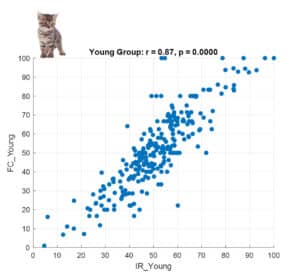
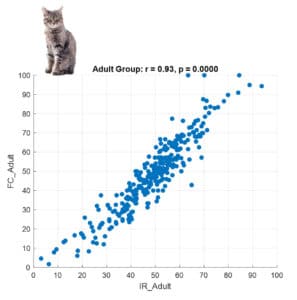
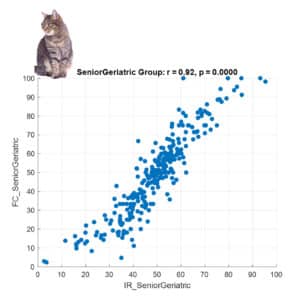
Figure 1 Scatter plots with the correlation between First Choice and Intake Ratio for cats according to life stages (young, adult and senior)

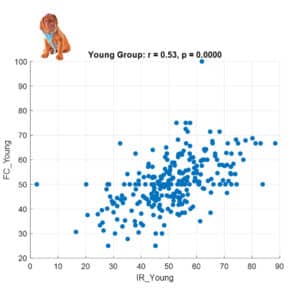
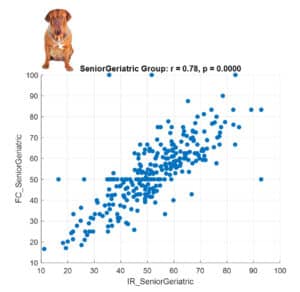
Figure 2 Scatter plots with the correlation between First Choice and Intake ratio for dogs according to life stages (young, adult and senior)
These results show that in dogs, first choice becomes a stronger predictor of intake as the animals mature, peaking in adulthood, while for cats, a consistently high correlation across all life stages indicates strong alignment between initial preference and overall consumption, even in younger animals.
In the following table the correlation factors, between intake ratio and first choice, are captured for both cats and dogs, across the 3 life stages, studied.
Table 1 Correlation (r-square) between FC and IR for cat and dog according with life stages

CONCLUSION
The insights provided suggest that while both species respond well to targeted palatants, life stage-specific adjustments are particularly impactful in dogs, especially in young animals where palatability preferences may still be developing. In cats, first choice was significantly positively correlated with intake ratio, for cats from young age through adulthood and into senior years.
Palatability isn’t one-size-fits-all. As dogs and cats grow, their sensory needs evolve and so should the approach. By considering first choice and intake ratio in the context of life stage, it’s possible to deliver more appealing, effective and differentiated pet food products.